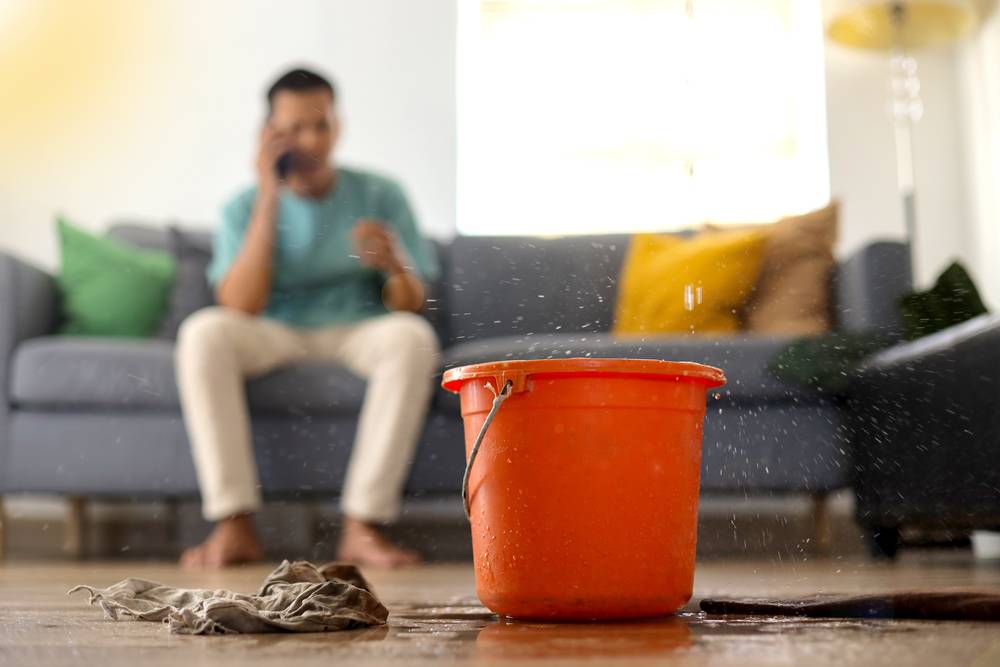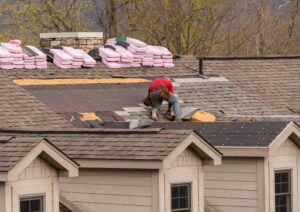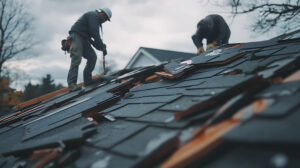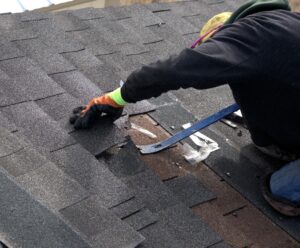Finding and addressing a roof leak promptly is one of the most essential aspects of home improvement. A leaky roof can cause significant damage if left unresolved, including costly roof repairs and long-term structural issues. When homeowners learn how to find a roof leak early, they can protect their homes from water damage, mold growth, and other potential hazards.
This guide is designed to help homeowners identify the signs of a roof leak, understand the common causes, and take effective steps to find and fix the problem. Addressing these issues early can safeguard your home, reduce repair expenses, and maintain its long-term value.
Understanding Roof Leaks
A roof leak can develop for various reasons, and understanding the common causes is the first step in solving the problem. Regular roof maintenance and timely inspections can prevent leaks, but knowing what to look for when a leak occurs is equally important.
Related: Tips for Choosing a Reliable Roofing Contractor
Common Causes of Roof Leaks
- Damaged Shingles
Shingles act as the first line of defense against the elements. Over time, they can become cracked, curled, or completely dislodged due to storms or normal wear and tear. Damaged shingles can leave the roof vulnerable to leaks. - Exposed Nails and Flashing Issues
Improperly sealed flashing or exposed nails can create pathways for water to seep into your roof. These small issues can quickly escalate if not addressed. - Damaged Vents and Roof Penetrations
Any area where the roof has been penetrated—such as around chimneys, vents, or skylights—can be a potential weak spot. Damaged or improperly sealed vents often allow water to enter the home.
Risks of Ignoring a Leaky Roof
Failing to address a leaky roof promptly can lead to a range of issues that extend far beyond the initial water entry point.
Water Damage to Interior Spaces
Leaks can cause unsightly water stains on ceilings and walls, leading to peeling paint or warped surfaces. If the problem persists, it can damage insulation, electrical wiring, and other interior components.
Mold Growth and Health Risks
Persistent moisture from a roof leak creates an ideal environment for mold growth, which can trigger allergies and respiratory issues for occupants. Mold remediation can be expensive and invasive if the problem spreads extensively.
Structural Damage to Exterior Walls and Roof
Prolonged water exposure can weaken the integrity of your roof and the supporting structure. This can result in costly structural repairs and even compromise the safety of your home.
Signs of a Roof Leak
Recognizing the signs of a roof leak is critical for addressing issues before they escalate into significant damage. By paying attention to both interior and exterior indicators, homeowners can quickly identify problems and take action.
Telltale Signs Inside the Home
- Water Stains on Ceilings and Walls – Brown or yellowish water stains are a clear sign of water intrusion. These often appear as irregularly shaped patches on ceilings or upper walls, indicating the presence of a leak.
- Mold Growth in Attic Spaces or Damp Areas – A leaky roof creates a damp environment that promotes mold growth. If you notice musty odors or visible mold in attic spaces, it’s a sign that water is infiltrating your home.
- Dripping Water or Visible Signs of Water Damage – Dripping water is the most obvious sign of a leak. In some cases, you might also find warped wood, peeling paint, or swollen drywall caused by prolonged exposure to moisture.
Signs on the Roof’s Exterior
- Damaged Shingles or Missing Tiles – Broken, cracked, or missing shingles are often the culprits behind roof leaks. Regularly inspect your roof for these issues, especially after heavy storms.
- Cracked or Damaged Vents and Flashing – Vents and flashing are common areas for water entry. Check for cracks, rust, or improper seals around these components to ensure they’re in good condition.
- Exposed Nails and Other Suspect Areas – Nails that have become loose or exposed can create small gaps that allow water to penetrate. Inspect these areas carefully, as they may not be immediately obvious.
How to Find a Roof Leak
Once you’ve identified the signs of a roof leak, the next step is to locate the source of the problem. By following these steps, you can effectively pinpoint and address the issue.
Initial Inspection Steps
- Inspect the Roof Visually for Damaged Shingles and Suspect Areas
Conduct a thorough visual inspection from the ground or using a ladder. Focus on areas with missing or damaged shingles, exposed nails, or visible gaps in the roof surface. - Examine the Attic for Signs of Water or Mold Growth
Use a flashlight to look for water stains, dripping water, or mold in the attic. Pay special attention to areas where sunlight is visible, as these can indicate openings in the roof. - Check Around Exterior Walls for Visible Water Stains
Examine the walls directly beneath the roofline for water stains, peeling paint, or other signs of water damage.
Using a Garden Hose to Pinpoint the Leak
Testing Suspect Areas
Enlist a helper and begin by running water from a garden hose over a small section of the roof. Work systematically, moving from one area to another, while your helper monitors the interior for signs of water.
Partnering with Someone to Spot Interior Signs of Water
Communication is key during this process. Have your partner notify you immediately if they observe water entering the home, helping you narrow down the exact location of the leak.
Advanced Methods for Challenging Leaks
Infrared Technology to Detect Hidden Moisture
For leaks that are difficult to locate, consider using infrared cameras. These devices detect temperature differences caused by moisture, making it easier to find hidden leaks.
Professional Inspections and Assessments
If your efforts to find the leak are unsuccessful, consult a professional roofing contractor. Their expertise and specialized tools can identify leaks that may not be visible to the untrained eye.
How to Fix the Leak
Fixing a roof leak requires both immediate action to minimize damage and permanent solutions to prevent recurrence. Taking the right steps ensures the issue is resolved effectively and your home is protected from further harm.
Temporary Fixes to Prevent Immediate Damage
- Using Tarps or Roofing Tape
To stop water from entering your home temporarily, secure a waterproof tarp over the affected area. Alternatively, use roofing tape to seal small gaps or cracks until a more permanent repair can be made. - Sealing Small Holes and Cracks
For minor leaks, applying a high-quality sealant can provide a quick solution. This is especially useful for small holes around exposed nails or flashing.
Permanent Repair Solutions
Replacing Damaged Shingles or Tiles
Remove any damaged or missing shingles and replace them with new ones. Ensure the new shingles are securely nailed and sealed to prevent further leaks.
Repairing Damaged Vents, Flashing, and Other Roof Components
Inspect and repair any cracked or rusted vents and flashing. Replace or reseal these components to restore a watertight barrier.
Re-securing or Replacing Exposed Nails
Check for loose or exposed nails that could compromise the roof’s integrity. Re-secure them properly or replace them with roofing screws if necessary.
Preventing Future Roof Leaks
The best way to protect your home from roof leaks is through proactive maintenance and preventative measures. These steps can significantly extend the life of your roof and minimize the risk of future issues.
Regular Roof Maintenance Tips
- Cleaning Gutters and Removing Debris
Clogged gutters can cause water to back up under your roof, leading to leaks. Clean gutters regularly and remove any leaves, twigs, or debris that could obstruct water flow. - Scheduling Routine Inspections and Repairs
Have your roof inspected by a professional at least once a year, or after severe weather events. Addressing minor issues early can prevent them from turning into costly repairs.
Proper Installation of Roofing Materials
Ensuring your roof is installed correctly from the start is key to preventing leaks. Hire experienced contractors who use high-quality materials and follow industry best practices.
Protecting Vulnerable Areas with Sealants and Coatings
Apply protective sealants and waterproof coatings to areas prone to leaks, such as around chimneys, vents, and skylights. These additional layers of protection can help keep water out.
Detecting and repairing a roof leak early is essential to maintaining the safety, value, and structural integrity of your home. Ignoring even small leaks can lead to significant problems, including costly water damage, mold growth, and structural deterioration.
Taking proactive measures, such as routine roof maintenance, cleaning gutters, and ensuring proper installation of roofing materials, can help prevent leaks from occurring in the future. By staying vigilant and addressing problems promptly, you can protect your home, save money on repairs, and enjoy the long-term benefits of a well-maintained roof.
When it comes to maintaining your roof, the key is simple: act quickly, stay informed, and don’t hesitate to call in professionals when needed. Your home—and your peace of mind—depends on it.





